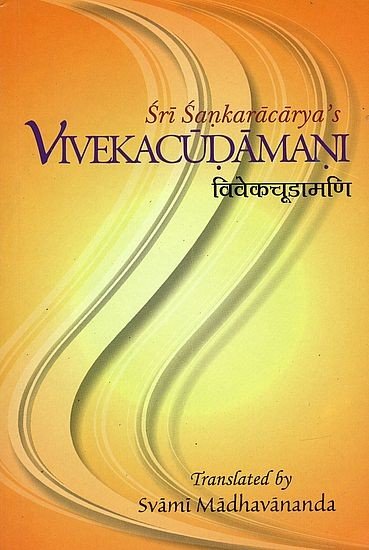Vivekachudamani
by Shankara | 1921 | 49,785 words | ISBN-13: 9788175051065
The Vivekachudamani is a collection of poetical couplets authored by Shankara around the eighth century. The philosophical school this compilation attempts to expose is called ‘Advaita Vedanta’, or non-dualism, one of the classical orthodox philosophies of Hinduism. The book teaches Viveka: discrimination between the real and the unreal. Shankara d...
Verse 349-350
अयोऽग्नियोगादिव सत्समन्वयान्
मात्रादिरूपेण विजृम्भते धीः ।
तत्कार्यमेतद्द्वितयं यतो मृषा
दृष्टं भ्रमस्वप्नमनोरथेषु ॥ ३४९ ॥ततो विकाराः प्रकृतेरहंमुखा
देहावसाना विषयाश्च सर्वे ।
क्षणेऽन्यथाभावितया ह्यमीषाम्
असत्त्वमात्मा तु कदापि नान्यथा ॥ ३५0 ॥ayo'gniyogādiva satsamanvayān
mātrādirūpeṇa vijṛmbhate dhīḥ |
tatkāryametaddvitayaṃ yato mṛṣā
dṛṣṭaṃ bhramasvapnamanoratheṣu || 349 ||tato vikārāḥ prakṛterahaṃmukhā
dehāvasānā viṣayāśca sarve |
kṣaṇe'nyathābhāvitayā hyamīṣām
asattvamātmā tu kadāpi nānyathā || 350 ||349-350. Like iron manifesting as sparks through contact with fire, the Buddhi manifests itself as knower and known through the inherence of Brahman. As these two (knower and known), the effects of the Buddhi, are observed to be unreal in the case of delusion, dream and fancy, similarly, the modifications of the Prakriti, from egoism down to the body and all sense-objects are also unreal. Their unreality is verily due to their being subject to change every moment. But the Ātman never changes.
Notes:
[Like iron &c.—Iron, itself, is never incandescent. it is fire that makes it appear so. Similarly the intelligence of Brahman is imparted to Buddhi.
The word JTf’snf?’ can be disjoined in two ways; viz. as + ^nfgr or as ruff !inÍ 7 the first gives us the meaning of ‘sparks ' and the second that of knower and known, i. e. subject and object.
The modifications...... are also unreal—because
they, too, are effects and derivatives of Prakriti and depend on their perception by the Buddhi. ]
